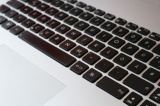Mandriva 2010.0 and Cedega CD/DVD Detection
November 29, 2009 Reading time: ~1 minute See Comments
 Having recently upgraded to Mandriva 2010.0, I also wanted to give Cedega a go, so I loaded up the latest Cedega and found that certain CDs and DVDs were not recognised. They would load OK but would not run, failing the “copy-protection” test in Cedega Diagnostics. The game in this case was Oblivion which installed fine but would not run.
Having recently upgraded to Mandriva 2010.0, I also wanted to give Cedega a go, so I loaded up the latest Cedega and found that certain CDs and DVDs were not recognised. They would load OK but would not run, failing the “copy-protection” test in Cedega Diagnostics. The game in this case was Oblivion which installed fine but would not run.
I found that I had to manually add an entry to the end of /etc/fstab file, to specifically set the CD/DVD options:
# Entry added to allow Cedega copy-protection test to work.
/dev/sr0 /mnt/cdrom iso9660 user,unhide,noauto,ro 0 0You will need to replace “/dev/sr0″ with the actual location of your CD/DVD drive. You can check where the /dev/cdrom and /dev/dvd links point to get this information. I’d imagine that in most cases “sr0″ will be correct.
Strangely enough the same set up on a notebook worked perfectly without any changes to the fstab file. So it’s obviously only certain hardware configurations that need this change.
See Comments
Wireless LED on Notebooks
December 30, 2007 Reading time: 2 minutes See Comments

Having just installed Mandriva Powerpack 2008 (and it is very good by the way, you can buy it at http://www.divtech.com.au), I found that all the hardware of my notebook was automatically identified and worked perfectly. With the exception of the wireless LED. I have the Intel Centrino using the ipw2200 driver, the wireless works perfectly but the LED according to the documentation is an experimental option.
In order to activate it I only had to add the line “options ipw2200 led=1″ to the /etc/modprobe.conf file. I used “vi” in order to do this (you need to have root privileges). Alternatively if you want a graphical way to do it go into “Configure your Computer”, its on the quick launch bar in Mandriva 2008, select “Hardware”, the “Browse and Configure Hardware”, the hardware list will then be compiled and displayed.
In the list you should find a category called “Ethernet Card” and as a sub-category to that you will see your wireless card listed (something like “PRO/Wireless 2915ABG” or similar). Select the card and in the right hand windows click on “Set current driver options”. The windows that comes up will show all the parameters to the ipw2200 driver, scroll down to find the “led” parameter and enter “1″ into the textbox. Click “OK” to save. You can then exit the control centre. You will probably need to reboot to activate the LED function. Even though the LED option is experimental it seems to work fine for me.
I would appreciate your feedback if you have comments, corrections or additions to this article, Thanks.
See Comments
Setting up Notebook Hotkeys
July 27, 2007 Reading time: 2 minutes See Comments

I recently set up the hotkeys on my notebook in Mandriva 2007 running KDE. It is fairly simple to do and consists of one script file and then appropriate entries in “Keyboard Shortcuts”.
I created the following file called “command-shortcuts” and placed it in the “bin” directory in my home directory. Make sure to make it executable using “chmod +x command-shortcuts”.
#!/bin/sh
xmodmap -e “keycode 176 = F20″ # Volume up
xmodmap -e “keycode 174 = F21″ # Volume down
xmodmap -e “keycode 160 = F22″ # Mute volume
xmodmap -e “keycode 178 = F23″ # Mail hotkey
xmodmap -e “keycode 236 = F24″ # Web hotkey
xmodmap -e “keycode 162 = F25″ # Play / Pause
xmodmap -e “keycode 164 = F26″ # Stop
xmodmap -e “keycode 144 = F27″ # Previous Track
xmodmap -e “keycode 153 = F28″ # Next Track
xmodmap -e “keycode 115 = F29″ # Win
xmodmap -e “keycode 117 = F30″ # Menu
xmodmap -e “keycode 223 = F31″ # SleepThe keycodes should work for many notebooks. To check they are right for your notebook you can run the ‘xev’ command in a console. The keycode will be displayed for each key you press.
So that the keycodes get loaded at each login, add “/home/{username}/bin/command-shortcuts” to the end of your “.bashrc” file. Replace {username} with your login name.
Now launch “Keyboard Shortcuts” from the “System”, “Conifguration”, “KDE”, “Regional & Accessibility” Menu. Here using the “Command Shortcuts” tab you can assign the “Mail” and “Web” Keys. Using the “Shortcut Schemes” you can assign the the “Win”, “Menu” & “Sleep” Keys. I set the “Win” key to switch to the next desktop, the “Menu” key brings up the KDE Menu and the “Sleep” key issue the logout command.
Finally you can set up the Volume Down, Up and Mute by right-clicking on the Mixer and selecting “Show Mixer Windows”. Then from the “Settings” menu select “Global Shortcuts” and assign the appropriate keys. You can do the same in Amarok for the “Play/Pause”, “Stop”, “Previous Track”, “Next Track”.
Thanks go to Ubuntu user zba78 who posted info on hotkeys at http://ubuntuforums.org/showthread.php?p=1260079.
I would appreciate your feedback if you have comments, corrections or additions to this article, Thanks.
See Comments
Using nVidia Twinview and mplayer
June 10, 2007 Reading time: ~1 minute See Comments

I recently set up a second monitor and then managed to use it to display video whilst still working on my main monitor as usual…
Here are the main settings to add to your xorg.conf file. In the "Screen" Section Add..
Option "MetaModes" "1024×768,1280×800"
Option "TwinView"
Option "TwinViewOrientation" "DFP-0 LeftOf CRT-0"
Option "TwinViewXineramaInfoOrder" "DFP-0, CRT-0"To find the id's of your monitors look at the /var/log/xorg.0.log file. I reversed the order of the screens using "TwinViewXineramaInfoOrder" and placed CRT-0 to the right of DFP-0 with "TwinViewOrientation".
To play a video file on either screen you specify the "-xineramascreen" parameter with "0" or "1". For example…
$ mplayer -aspect 16:9 -stop-xscreensaver -xineramascreen 0 video-file-1.avi$ mplayer -aspect 16:9 -stop-xscreensaver -xineramascreen 1 video-file-1.avi